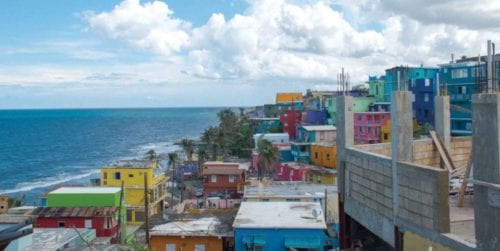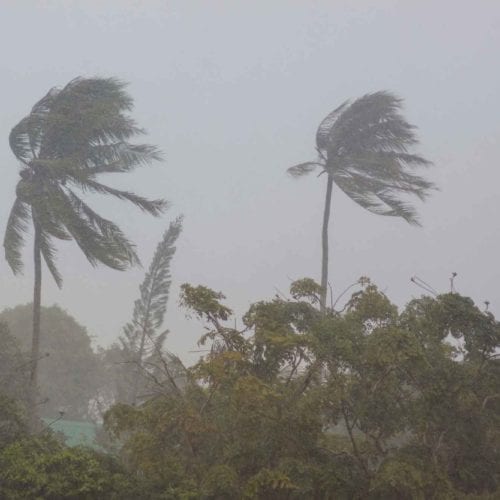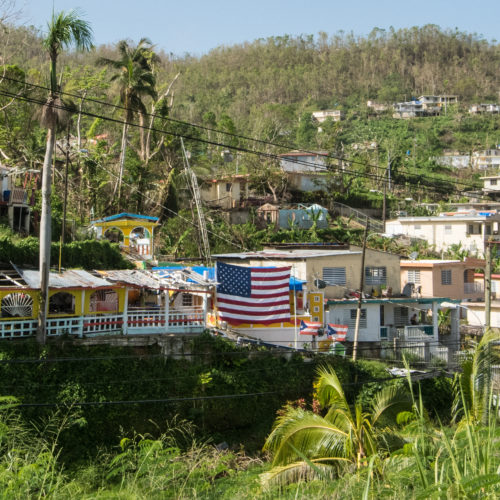
Implementing Puerto Rico’s Energy Transformation
Moving from Planning to Action
Just a couple of months ago, deadly earthquakes in Puerto Rico’s south coast destroyed homes and public buildings and damaged a major power plant. This, coming after the 2017 devastating hurricane season, highlights the continued challenges of the island’s current grid and difficulty of planning for the future. Fortunately, early last year, Puerto Rico’s government passed a new energy policy law (Act 17), establishing a 100 percent renewable goal, along with a number of supporting policies. Since then, the island’s utility (PREPA), energy regulator (PREB), environmental groups, and other intervenors have been debating the implementation of this vision through a public and participatory integrated resource plan (IRP) process in order to set the 20-year plan for the transformation of Puerto Rico’s electric system.
As the IRP planning process now reaches its close, PREB is faced with the challenging task of directing PREPA on what to do next. While RMI and others have highlighted shortfalls in the plan PREPA proposed—including a bias toward natural gas over renewables—more than enough clarity has emerged from the hearings and analysis to take meaningful action now that can start the transformation of Puerto Rico’s energy system and can provide a much-needed reliability boost to its battered grid.
The Importance of Taking Action Now
For Puerto Ricans exposed to yet more debilitating power outages, the grid needs to be improved without delay. Taking action now—including new directives to quickly proceed with renewable energy and efficiency—will yield a far better, cheaper, and more resilient electric system for Puerto Ricans.
More than two years after Hurricane Maria struck, Puerto Rico’s grid looks mostly the same as it did before the storm. Puerto Ricans continue to pay high and burdensome rates for dirty and unreliable power generated from antiquated oil-fired power plants. Recent earthquake damage and related blackouts have returned focus to these critical issues and forced more usage of the oldest power plants. While the current integrated resource plan process has highlighted important weaknesses in the analysis put forward by PREPA, the urgent need for change requires that PREB direct PREPA to move forward with the IRP, procurements, and other required regulations for the energy transformation, so that progress is not further delayed. In particular, the ongoing reliability gap resulting from earthquake damage to the Costa Sur Power Plant poses an imminent risk of blackouts as seasonal air conditioning load is expected to increase in the coming months.
The Need for Major New Investment in Solar and Battery Storage
Even as the analysis behind PREPA’s proposed IRP has been contested in recent hearings, it is clear that major new capacity of both solar and battery energy storage is needed, both to meet the renewable targets of Act 17, and to deliver clean, reliable, and low-cost energy. PREPA’s preferred “Energy System Modernization” plan includes 2,400 megawatts of new solar and 920 megawatt hours of new battery energy storage by 2025. Other scenarios in the IRP include higher amounts of both. The need to rapidly scale up these technologies in Puerto Rico is clear, and even as PREB grapples with disputed recommendations around natural gas, it can direct PREPA to move ahead with major new solar and storage projects.
More urgently, the current state of the grid, without Costa Sur and lacking the flexibility to handle contingency events (such as power plant or transmission failures), requires expedited action to prevent blackouts in the coming months. Solar and battery storage can play a major role in filling this gap, if pursued quickly and determinedly. PREPA has been renegotiating contracts with legacy solar projects totaling in the hundreds of megawatts, including both those projects already completed and those that never started. These projects can be expedited, recognizing the emergency need for more capacity. Distributed solar and batteries in buildings around the island can also be brought on rapidly to improve reliability. Since Hurricane Maria, a significant number of battery storage systems have been paired with rooftop solar across Puerto Rico to ensure individual buildings can maintain power during grid outages. None of these batteries are currently configured to support the island-wide grid—despite being already installed and interconnected. An expedited procurement for virtual power plant solutions (knitting together many distributed assets) could quickly reconfigure these batteries for grid support, along with adding new rooftop solar and battery capacity.
PREB can also expedite new open procurements for solar and storage, with an eye toward meeting the 2025 renewable portfolio standard (RPS) requirements. And while uncertainty continues about investments in the layout of eight regional minigrids PREPA has proposed—potentially requiring more detailed study—new solar and storage procurements could focus on distributing these resources around the island consistent with the minigrid layout. That approach ensures that the benefits of the minigrid proposal remain available even if full deployment is not ordered immediately. Any new solar and storage procurements should also allow aggregations of distributed resources to compete head to head with large, centralized projects.
The Need to Proceed with Energy Efficiency Programs
Energy efficiency is a high value resource, and PREB should proceed with efforts to develop new efficiency programs in Puerto Rico. In the near term, this should include preparing energy efficiency efforts to reduce demand as one way to close the capacity gap left by Costa Sur’s outage. With an eye toward long-term efficiency solutions, PREB can continue to build a shared vision with stakeholder groups, including identifying the best funding opportunities to ensure equitable access, and clarifying how energy efficiency measures can compete with new supply, not taking for granted that Act 17 energy efficiency targets will be met.
The Time to Act Is Now
The transition to clean energy and a more reliable electric system is at hand, promising to slash spending on imported fuels, lower costs for ratepayers, improve air quality and health, and deliver resilient energy in the face of natural disasters. Public pressure and recent energy and climate change legislation clearly support this transition. The scale of change ahead is large, and it’s important to get things right. But, the costs of delaying action are also high, from continued expense on imported oil to a lack of reliability. Both Puerto Rico’s energy policy and the detailed 20-year plans agree that major new growth in solar, storage, and energy efficiency are needed quickly to deliver on these promises. After the last few years of hurricane and earthquake recovery, and of policy development, planning, and analysis, now is the time to act on the big steps needed to transform Puerto Rico’s energy system, starting with major investment in solar, storage, and efficiency.

